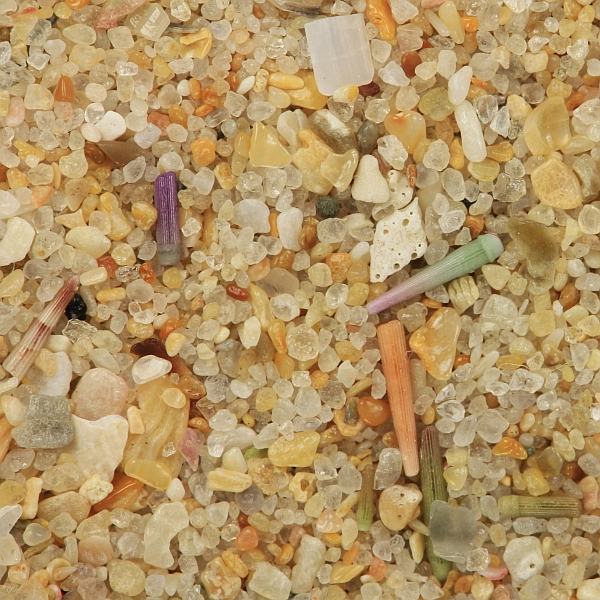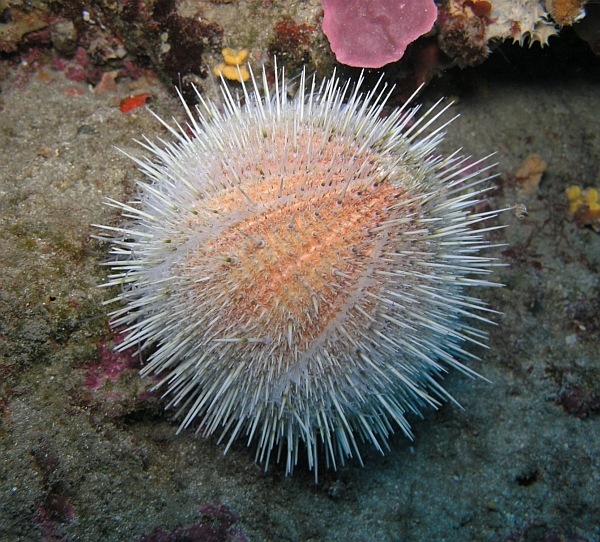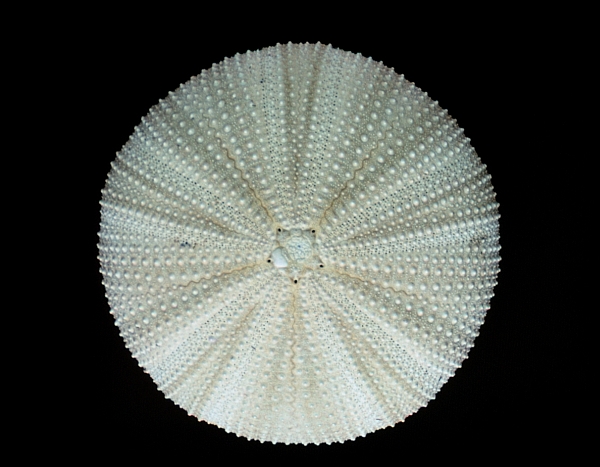Sea urchins spines are very common biogenic sand grains. Sea urchins are sometimes called echinoids although it is not precise because sand dollars and few other groups are echinoids as well. However, sea urchins tend to leave behind the most visible and numerous traces. I don’t know how many spines one animal may have but this number definitely exceeds 100. Hence it is no surprise that there are lots of spines in the sand but precious little sea urchin tests. These of course tend to break into fragments which makes finding and recognizing them even more complicated.

Elongated colorful grains are sea urchin spines. The width of the view is 10 mm. Muizenberg, South Africa.
Sea urchin spines are often colorful. Green, white, and purple are very common shades. They are easily recognizable even if the fragments are not elongated because they have very well developed and characteristic strucure. Sea urchins inhabit all oceans. Hence they may be present in both low and high latitude beach sands.

Alive sea urchin on the seabed near Sardinia. Photo: Marco Busdraghi/Wikimedia Commons.

Sea urchin test without spines. Photo: NOAA.
Leave a Reply